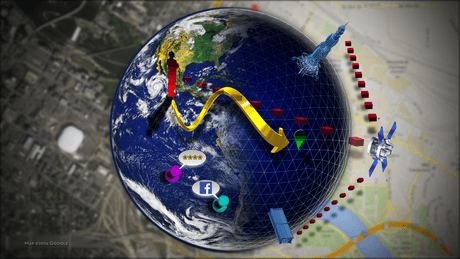GRATIS
Acerca de este curso
- Introduction and Graph-based Plan Methods
- Welcome to Week 1! In this module, we will introduce the problem of planning routes through grids where the robot can only take on discrete positions. We can model these situations as graphs where the nodes correspond to the grid locations and the edges to routes between adjacent grid cells. We present a few algorithms that can be used to plan paths between a start node and a goal node including the breadth first search or grassfire algorithm, Dijkstra’s algorithm and the A Star procedure.
- Configuration Space
- Welcome to Week 2! In this module, we begin by introducing the concept of configuration space which is a mathematical tool that we use to think about the set of positions that our robot can attain. We then discuss the notion of configuration space obstacles which are regions in configuration space that the robot cannot take on because of obstacles or other impediments. This formulation allows us to think about path planning problems in terms of constructing trajectories for a point through configuration space. We also describe a few approaches that can be used to discretize the continuous configuration space into graphs so that we can apply graph-based tools to solve our motion planning problems.
- Sampling-based Planning Methods
- Welcome to Week 3! In this module, we introduce the concept of sample-based path planning techniques. These involve sampling points randomly in the configuration space and then forging collision free edges between neighboring sample points to form a graph that captures the structure of the robots configuration space. We will talk about Probabilistic Road Maps and Randomly Exploring Rapid Trees (RRTs) and their application to motion planning problems.
- Artificial Potential Field Methods
- Welcome to Week 4, the last week of the course! Another approach to motion planning involves constructing artificial potential fields which are designed to attract the robot to the desired goal configuration and repel it from configuration space obstacles. The robot’s motion can then be guided by considering the gradient of this potential function. In this module we will illustrate these techniques in the context of a simple two dimensional configuration space.
Cursos relacionados

GRATIS Aprendiendo a aprender: Poderosas herramientas mentales…
Deep teaching solutions
Español

GRATIS Programación para todos (Introducción a Python)
University of Michigan
Inglés

GRATIS The Science of Well-Being
Yale
Inglés

GRATIS Negociación exitosa: Estrategias y habilidades esenciales
University of Michigan
Inglés

GRATIS Primeros Auxilios Psicológicos (PAP)
Universitat Autónoma de Barcelona
Español


